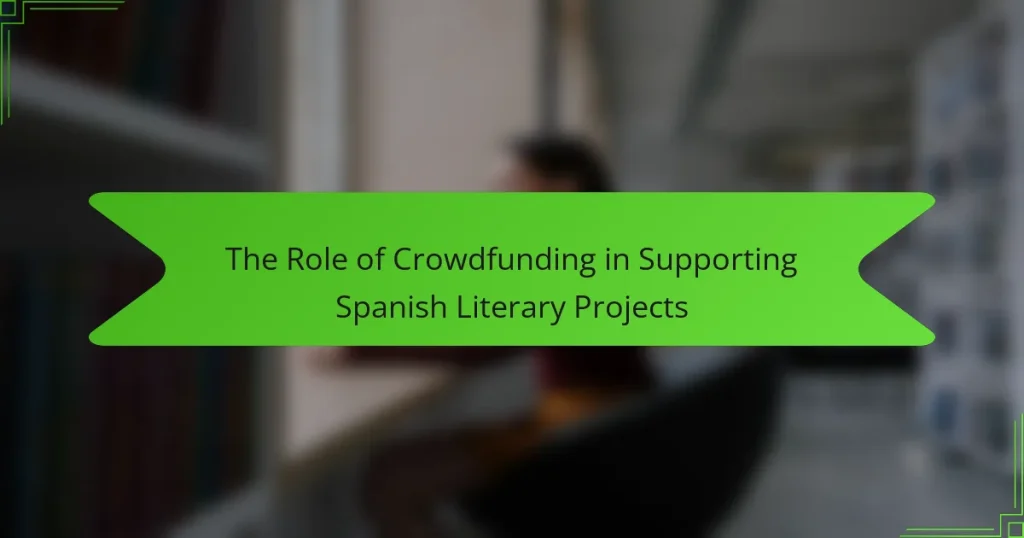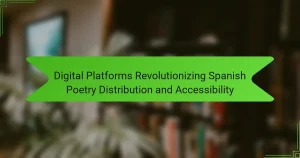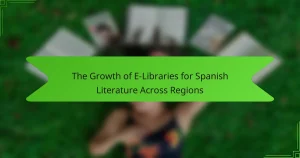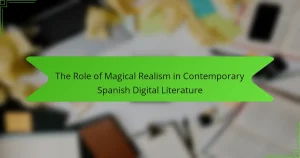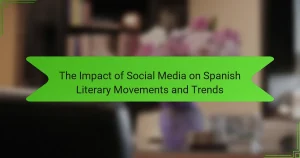Crowdfunding plays a crucial role in supporting Spanish literary projects by providing financial resources and fostering community engagement. This article explores the challenges faced by creators in a saturated market, highlights successful crowdfunding examples, and discusses effective marketing strategies for authors. Additionally, it examines future trends that may enhance the crowdfunding landscape in Spain’s literary scene.
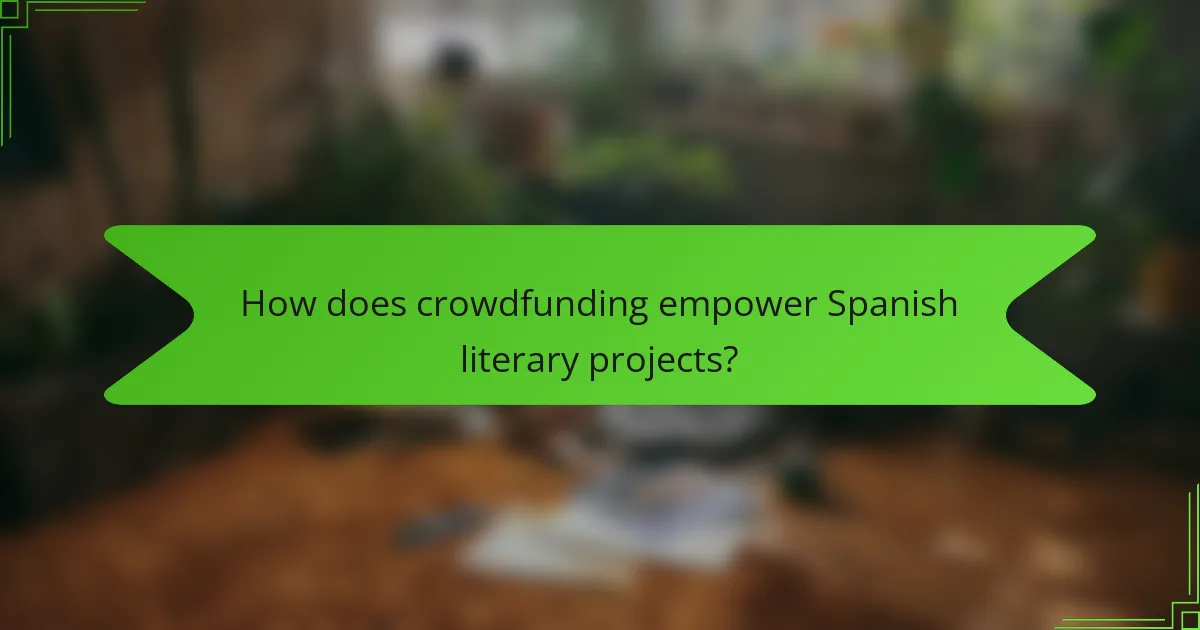
How does crowdfunding empower Spanish literary projects?
Crowdfunding significantly empowers Spanish literary projects by providing financial support and fostering community engagement. This model allows authors to connect directly with their audience, securing funds for publication and marketing. As a result, diverse voices and innovative stories gain visibility. Crowdfunding platforms enable creators to showcase unique attributes of their work, such as cultural relevance or experimental formats, attracting backers interested in supporting literature that reflects contemporary Spanish society. This approach democratizes access to funding, reducing reliance on traditional publishing routes and enhancing the literary landscape in Spain.
What are the key benefits of crowdfunding for authors and publishers?
Crowdfunding offers authors and publishers essential financial support, enhances community engagement, and validates market interest. It enables creators to fund their literary projects directly through reader contributions, reducing reliance on traditional funding sources. This approach fosters a loyal audience invested in the project’s success. Additionally, crowdfunding platforms provide exposure and marketing opportunities, allowing authors to reach wider audiences. Authors can retain creative control and ownership of their work, which is a unique advantage in a competitive publishing landscape.
Which crowdfunding platforms are most popular in Spain?
The most popular crowdfunding platforms in Spain include Verkami, Goteo, and Crowdcube. These platforms primarily support creative and innovative projects, including literature. Verkami specializes in artistic endeavors, while Goteo focuses on social initiatives. Crowdcube, on the other hand, allows equity crowdfunding, enabling backers to invest in startups. Each platform has unique attributes that cater to diverse funding needs within the Spanish literary scene.
How do cultural factors influence crowdfunding success in literary projects?
Cultural factors significantly influence crowdfunding success in Spanish literary projects by shaping community engagement and funding motivations. Cultural values, such as appreciation for literature and support for local authors, drive backers to contribute. Additionally, social networks within cultural communities enhance project visibility, increasing the likelihood of reaching funding goals. Understanding these cultural dynamics allows creators to tailor their campaigns effectively, maximizing appeal and support.

What challenges do Spanish literary projects face when using crowdfunding?
Spanish literary projects face significant challenges in crowdfunding, including market saturation and limited visibility. Many creators struggle to differentiate their projects amidst numerous campaigns. Additionally, a lack of established networks can hinder outreach efforts. Financial constraints often limit promotional activities, impacting funding success. Lastly, cultural perceptions of crowdfunding may affect potential backers’ willingness to support literary endeavors.
How do economic conditions impact crowdfunding outcomes?
Economic conditions significantly influence crowdfunding outcomes for Spanish literary projects. Economic stability encourages higher participation and funding levels, while downturns often lead to reduced contributions. For instance, during economic crises, potential backers may prioritize essential spending over supporting creative endeavors. Conversely, a thriving economy can foster a culture of investment in the arts, leading to successful funding campaigns. Additionally, factors such as unemployment rates and consumer confidence directly affect donor willingness to contribute, impacting the overall success of crowdfunding initiatives.
What common pitfalls should creators avoid in crowdfunding campaigns?
Creators should avoid common pitfalls like unclear goals, inadequate marketing, and lack of engagement. These issues can undermine the success of Spanish literary projects in crowdfunding.
1. Unclear Objectives: Clearly define project goals to attract backers.
2. Poor Marketing Strategy: Utilize social media and networks to promote effectively.
3. Ignoring Community Engagement: Actively involve supporters to build a loyal base.
4. Inadequate Budgeting: Plan for all costs to avoid shortfalls.
5. Neglecting Updates: Regularly inform backers about project progress to maintain interest.
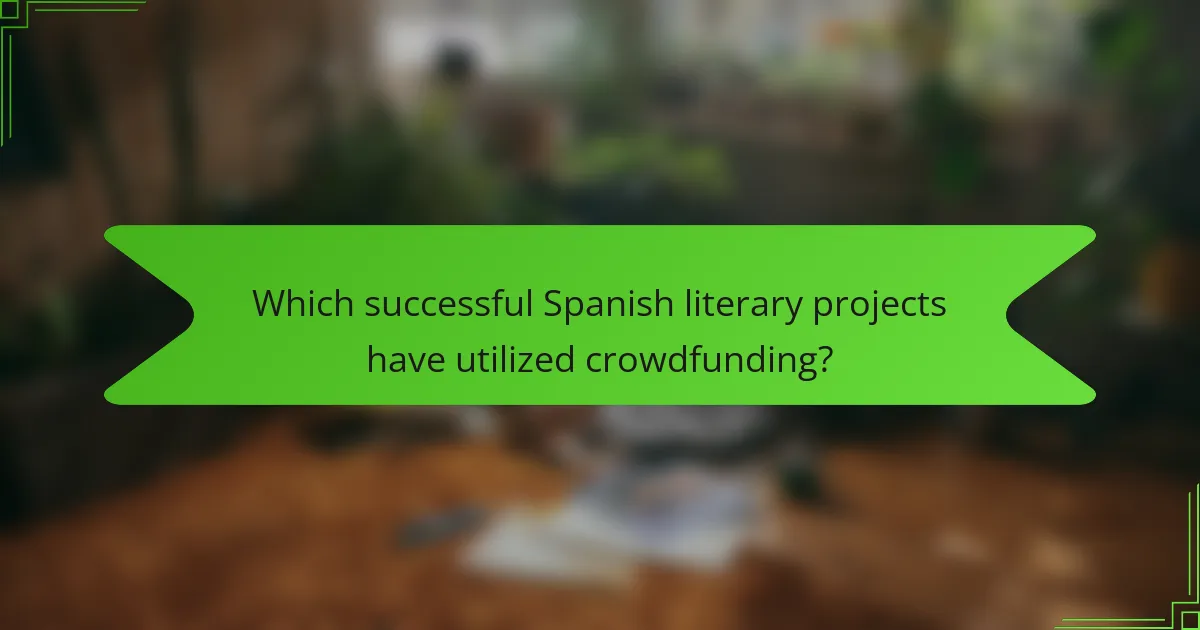
Which successful Spanish literary projects have utilized crowdfunding?
Several successful Spanish literary projects have utilized crowdfunding to achieve their goals. Notable examples include “La Casa de los Espíritus” by Isabel Allende, which raised funds for a special edition, and “Los Muertos” by Javier Cercas, which funded a limited print run. These projects highlight how crowdfunding empowers authors to connect with their audience and finance unique literary ventures. Additionally, platforms like Verkami and Goteo have facilitated numerous projects, showing the growing trend of community-supported literature in Spain.
What unique attributes contribute to the success of these projects?
Unique attributes that contribute to the success of crowdfunding for Spanish literary projects include community engagement, cultural relevance, and innovative rewards. Community engagement fosters a sense of belonging and support among backers. Cultural relevance ensures that projects resonate with the audience’s identity and values. Innovative rewards, such as exclusive content or personalized experiences, enhance backer motivation and participation. These attributes collectively create a strong foundation for successful funding and project realization.
How do different genres of literature fare in crowdfunding?
Different genres of literature experience varying levels of success in crowdfunding, influenced by audience engagement and project appeal. Fiction often attracts broader support due to its relatable narratives, while poetry may struggle despite its artistic value. Non-fiction projects can perform well, especially those addressing current social issues. Genre-specific marketing strategies play a crucial role in attracting backers. For instance, fantasy and science fiction projects often benefit from established fan bases. Ultimately, the success of crowdfunding in literature hinges on how effectively creators connect with potential supporters.
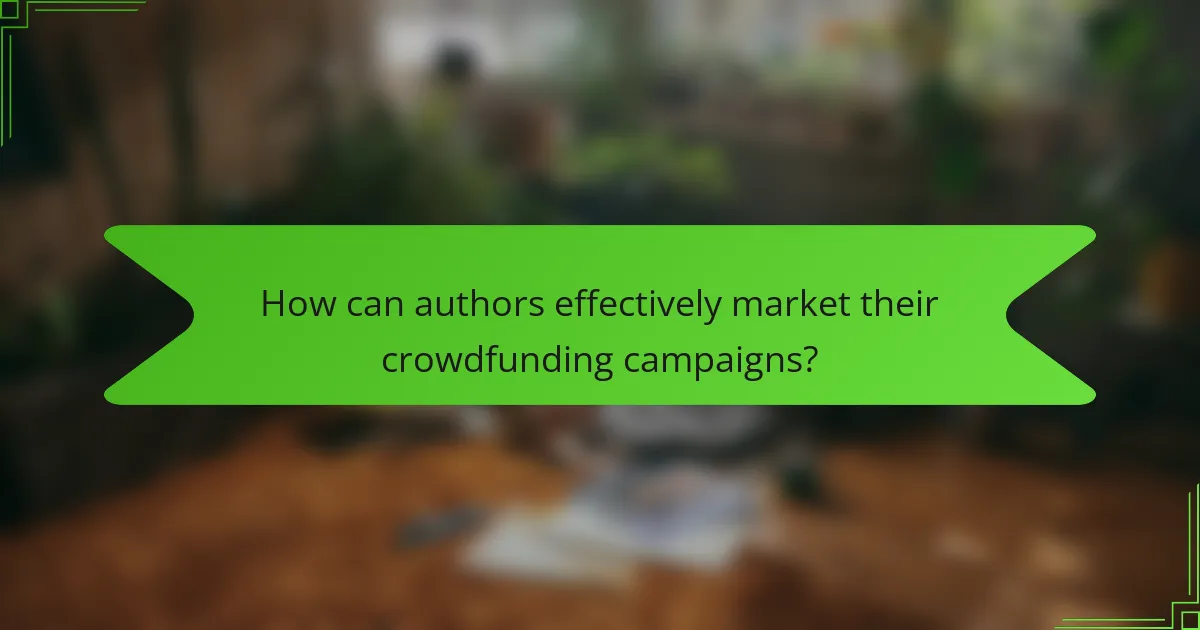
How can authors effectively market their crowdfunding campaigns?
Authors can effectively market their crowdfunding campaigns by leveraging social media, engaging with their audience, and creating compelling content. Building a strong online presence is crucial for attracting backers.
Engaging storytelling can capture potential supporters’ interest. Authors should share personal insights about their projects, highlighting unique attributes that differentiate their work.
Collaborating with influencers in the literary community can expand reach. These partnerships can bring credibility and additional visibility to crowdfunding efforts.
Offering exclusive rewards for backers enhances appeal. Unique incentives, such as signed copies or personalized experiences, can motivate potential supporters to contribute.
What role do social media and online communities play in promoting campaigns?
Social media and online communities significantly enhance the visibility and support for crowdfunding campaigns focused on Spanish literary projects. They facilitate direct engagement between creators and potential backers, fostering a sense of community around shared interests.
Platforms like Twitter and Facebook allow authors to share updates, connect with readers, and promote their campaigns effectively. Online communities provide a space for feedback and encouragement, which can lead to increased funding.
Moreover, social media analytics help measure campaign reach and engagement, enabling creators to adjust their strategies in real time. As a result, leveraging these digital tools can lead to a higher success rate for literary crowdfunding efforts.
Which strategies can enhance engagement with potential backers?
To enhance engagement with potential backers, utilize personalized communication, showcase project uniqueness, and leverage social proof. Building a compelling narrative around the project fosters emotional connections. Incorporate visual content to illustrate progress and impact, encouraging backers to feel invested. Engaging with the community through updates and feedback creates a sense of ownership among supporters.
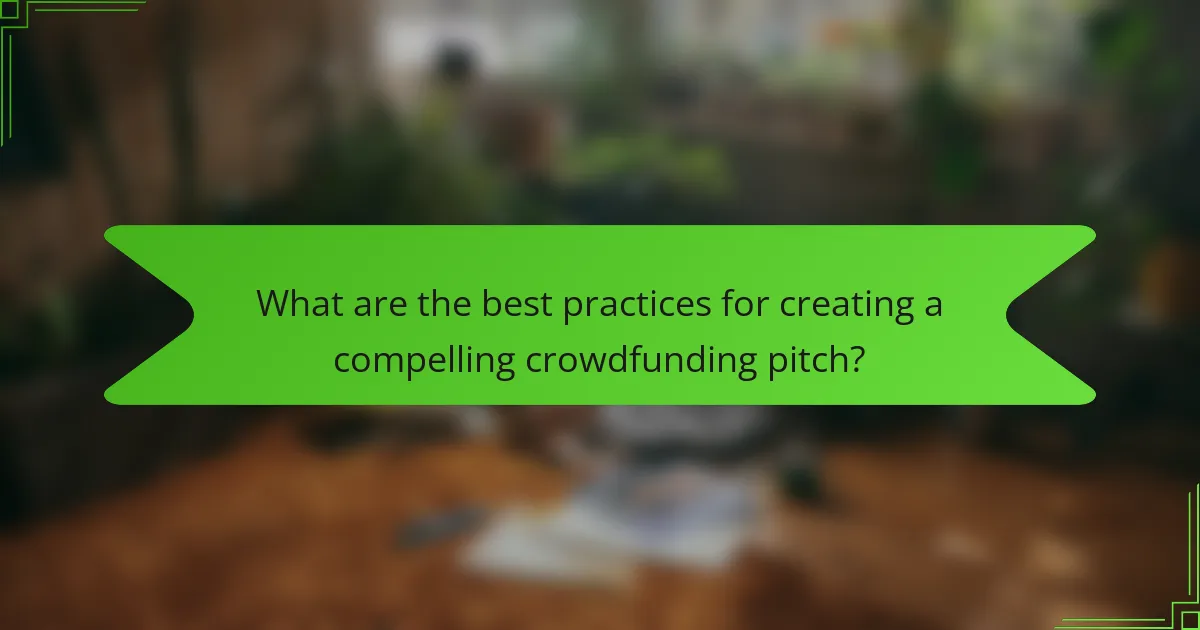
What are the best practices for creating a compelling crowdfunding pitch?
To create a compelling crowdfunding pitch for Spanish literary projects, focus on storytelling, clear goals, and community engagement. Highlight the project’s unique attributes, such as its cultural significance or innovative approach. Use visuals and concise language to convey passion and urgency. Engage potential backers with personal anecdotes and emphasize the impact of their support.
How important are visuals and storytelling in crowdfunding presentations?
Visuals and storytelling are crucial in crowdfunding presentations as they enhance engagement and convey emotional narratives. Effective visuals attract attention, while storytelling builds a connection with potential backers. Together, they can significantly increase funding success rates for Spanish literary projects, making them more relatable and memorable. Engaging narratives can highlight unique attributes of a project, such as cultural significance or innovative approaches, ultimately leading to stronger support.
What rewards or incentives resonate most with backers?
Backers are most resonated with personalized rewards, exclusive content, and community engagement. Tailored incentives like signed copies or behind-the-scenes access foster a deeper connection. Additionally, offering recognition in project materials enhances backer loyalty.
How can authors maintain momentum throughout the campaign?
Authors can maintain momentum throughout the crowdfunding campaign by engaging their audience consistently. Regular updates keep backers informed and invested in the project. Utilizing social media platforms to share progress and interact with supporters fosters a community around the project. Creating incentives, such as exclusive content or rewards for backers, can also enhance engagement. Setting clear milestones and celebrating achievements encourages continued support and excitement.
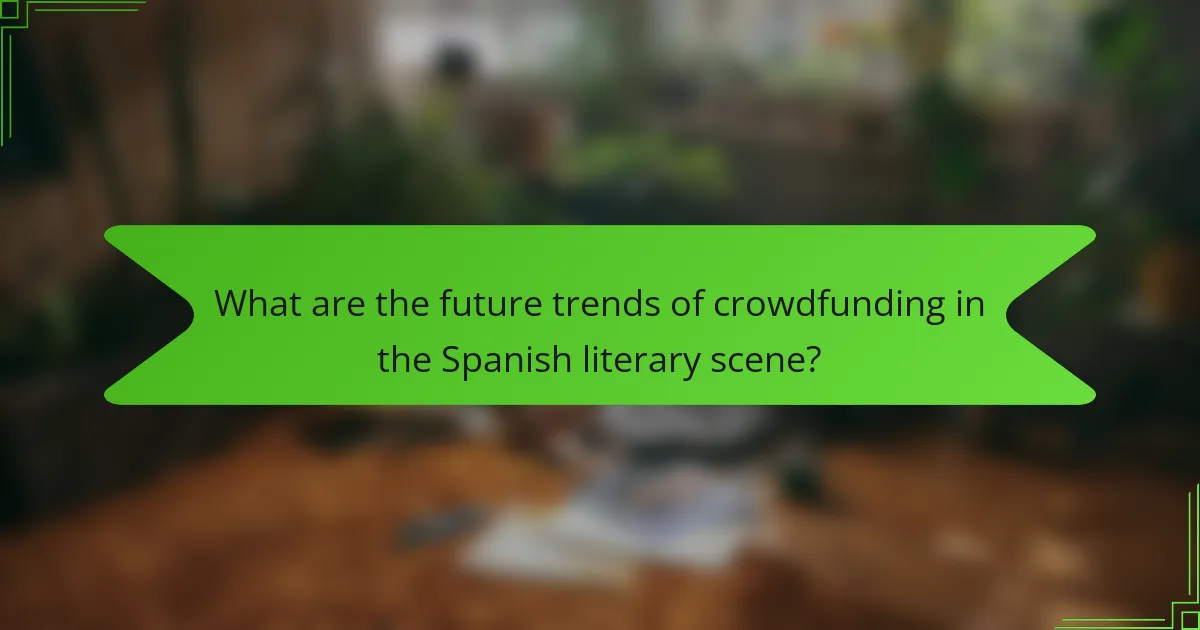
What are the future trends of crowdfunding in the Spanish literary scene?
Crowdfunding is increasingly pivotal in the Spanish literary scene, fostering diverse projects and voices. Future trends include a rise in niche platforms catering to specific genres, enhancing community engagement through interactive campaigns, and increased collaboration between authors and readers. Additionally, data analytics will inform funding strategies, allowing creators to tailor proposals effectively. Crowdfunding will also likely integrate with digital platforms, expanding outreach and visibility for literary works.
How might technology and innovation shape crowdfunding strategies?
Technology and innovation significantly enhance crowdfunding strategies for Spanish literary projects. Digital platforms streamline funding processes and broaden audience reach. Social media integration allows for targeted marketing and community engagement. Advanced analytics help creators understand donor preferences, optimizing campaigns for better results. Additionally, blockchain technology increases transparency, fostering trust among backers.
What emerging platforms or models could disrupt traditional crowdfunding?
Emerging platforms like blockchain-based crowdfunding and equity crowdfunding models could disrupt traditional crowdfunding. These innovations enhance transparency, security, and investor engagement. Blockchain allows direct transactions without intermediaries, while equity crowdfunding enables backers to own shares in projects. As a result, these models could reshape funding dynamics for Spanish literary projects, attracting diverse investors and fostering community support.
What lessons can be learned from recent crowdfunding campaigns in literature?
Recent crowdfunding campaigns in literature demonstrate the potential for community engagement and financial support for Spanish literary projects. Successful campaigns often highlight unique narratives that resonate with backers. They also showcase the importance of building a dedicated audience prior to launching. For instance, leveraging social media platforms effectively can significantly enhance visibility and attract funding. Additionally, transparency in project goals and budget allocation fosters trust among potential supporters. Engaging storytelling and clear communication of the project’s impact are crucial for encouraging contributions.
What expert tips can help authors optimize their crowdfunding efforts?
Authors can optimize their crowdfunding efforts by clearly defining their project goals, engaging with their audience, and offering enticing rewards. Establish a compelling narrative that highlights the unique aspects of the Spanish literary project. Utilize social media to reach a broader audience and maintain regular updates to keep backers informed and invested. Leverage partnerships with literary organizations to enhance credibility and visibility.
